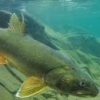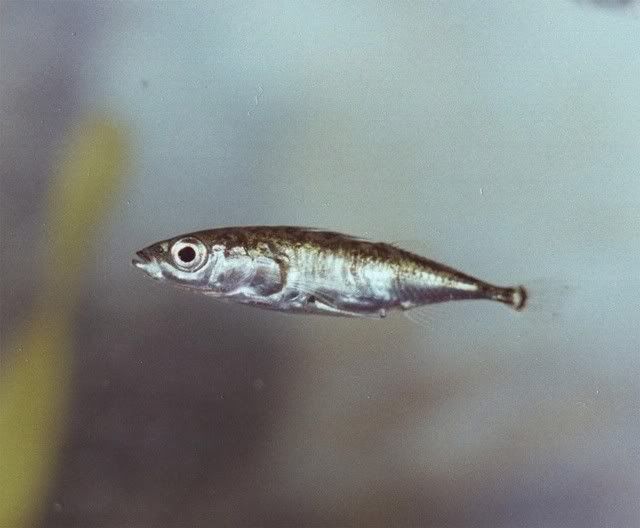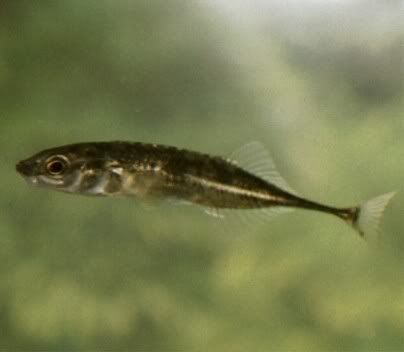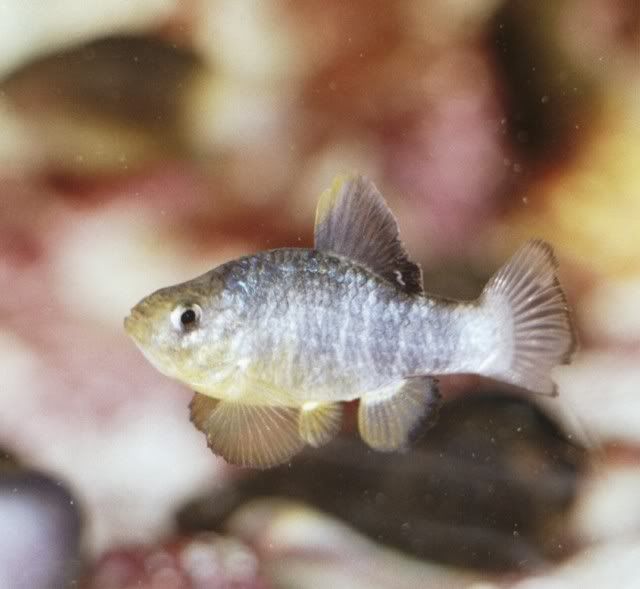
US Native Brackish Fish
#1

Posted 13 July 2014 - 08:11 PM
#2
 Guest_keepnatives_*
Guest_keepnatives_*
Posted 13 July 2014 - 08:24 PM
others and their own kind. Gobies, mummichugs and sheepsheads are tough characters.
#3

Posted 13 July 2014 - 08:59 PM
#4
 Guest_keepnatives_*
Guest_keepnatives_*
Posted 13 July 2014 - 10:07 PM
#5
 Guest_killier_*
Guest_killier_*
Posted 13 July 2014 - 10:12 PM
#6
 Guest_Dustin_*
Guest_Dustin_*
Posted 14 July 2014 - 10:14 AM
#7
 Guest_Stickbow_*
Guest_Stickbow_*
Posted 14 July 2014 - 01:51 PM
You occasionally see color variants in the wild too - those are fun.
#8

Posted 14 July 2014 - 06:41 PM
#9
 Guest_gerald_*
Guest_gerald_*
Posted 14 July 2014 - 09:04 PM
#10
 Guest_keepnatives_*
Guest_keepnatives_*
Posted 14 July 2014 - 10:37 PM
#11
 Guest_Moontanman_*
Guest_Moontanman_*
Posted 15 July 2014 - 07:06 AM
#12
 Guest_mikez_*
Guest_mikez_*
Posted 26 July 2014 - 09:20 AM
Mummies are great, hardy, some color, easy to find, easy to keep. Bigger than rainwaters, I wouldn't keep them in small tanks.
Sheepshead are really cool, interesting and breeding males have electric blue highlites that blow your mind. They are bigger, like to school and are very scrappy toward one another. In a large school in a big tank, they make an awesome disply. Not so tolerant of freshwater, I've never seen them far from true salt.
Naked gobies are really interesting tiny little guys. I have kept several that did really well. The one thing I noticed about them is almost all other fish seem to mercilessly chase and harass them. Some simply can not stand a naked goby in the same tank and will not rest until they are dead. I don't know why I but I suspect naked gobies are nest robbers. I do not think they go far from true salt, but not positive, they are mostly strays this far north and only show up every few years.
I never had luck with any silverside species, from any salinity. Most die in the bucket. The ones that make it home are "Typhoid Marys" that get sick and spread their misery. I suggest leaving them alone, except as bait - a role at which they excel.
Mollies are my fav and I've been keeping Florida Everglades mollies for years. Just added Florida Pan Handle mollies to the mix for diversity. The Everglades mollies came from a mangrove swamp which showed mostly marine species and plants. The Pan Handle mollies were from a freshwater retaining pond with lush green plants and lots of frogs and tadpoles - indicators of close to pure fresh water. I disagree with the premise often repeated that mollies are disease prone or otherwise compromised by freshwater. The secret is mineral hardness, large tank, clean water and LOTS of fresh green plant material. Given those conditions, mollies go on for generations without trouble.
#13
 Guest_mikez_*
Guest_mikez_*
Posted 26 July 2014 - 09:56 AM
I've kept 4 spine [most hardy and tolerant of freshwater, nasty disposition], 3 spine [now protected in Ma, pretty tinfoil silver color mostly, breeding males fire engine red, does fine in full freshwater when carefully acclimated, less feisty, does well in schools], and 9 spine [most fragile, hard to find in Ma, never kept or collected in freshish water].
Of the 3 species, 4 spines are most abundant and found in diverse habitat ranging from full marine ocean water to spring fed freshwater trout streams and ranging across all water quality types including stagnant splash pools which they share with rainwater and mummies. only drawback is poor color and rampant fin nipping of all tankmates.
I have a whole series of pics of these species and the ones above in captivity but can't seem to post pics anymore.
#14
 Guest_Moontanman_*
Guest_Moontanman_*
Posted 26 July 2014 - 11:22 AM
My favorites by far are rainwater killies. They are scrappy but small enough to be harmless. They breed easily in fresh or salt or inbetween, but are devout fry eaters, their own and anybody else's. Fresh, salt, brackish, they don't seem to care.
Mummies are great, hardy, some color, easy to find, easy to keep. Bigger than rainwaters, I wouldn't keep them in small tanks.
Sheepshead are really cool, interesting and breeding males have electric blue highlites that blow your mind. They are bigger, like to school and are very scrappy toward one another. In a large school in a big tank, they make an awesome disply. Not so tolerant of freshwater, I've never seen them far from true salt.
Naked gobies are really interesting tiny little guys. I have kept several that did really well. The one thing I noticed about them is almost all other fish seem to mercilessly chase and harass them. Some simply can not stand a naked goby in the same tank and will not rest until they are dead. I don't know why I but I suspect naked gobies are nest robbers. I do not think they go far from true salt, but not positive, they are mostly strays this far north and only show up every few years.
I never had luck with any silverside species, from any salinity. Most die in the bucket. The ones that make it home are "Typhoid Marys" that get sick and spread their misery. I suggest leaving them alone, except as bait - a role at which they excel.
Mollies are my fav and I've been keeping Florida Everglades mollies for years. Just added Florida Pan Handle mollies to the mix for diversity. The Everglades mollies came from a mangrove swamp which showed mostly marine species and plants. The Pan Handle mollies were from a freshwater retaining pond with lush green plants and lots of frogs and tadpoles - indicators of close to pure fresh water. I disagree with the premise often repeated that mollies are disease prone or otherwise compromised by freshwater. The secret is mineral hardness, large tank, clean water and LOTS of fresh green plant material. Given those conditions, mollies go on for generations without trouble.
The trick with silversides is to catch small ones, around and inch or less, put them in a aerated bucked and take them straight home, I've keep inland siversides before and they feed well on tiny pellets, They are a beautiful fish when mature and at ease in an aquarium, they have clear flesh and an emerald green iridescent stripe. I had a school of a couple dozen in a 125 and even shipped some to a dealer far inland.
#15
 Guest_mikez_*
Guest_mikez_*
Posted 26 July 2014 - 12:48 PM
The trick with silversides is to catch small ones, around and inch or less, put them in a aerated bucked and take them straight home, I've keep inland siversides before and they feed well on tiny pellets, They are a beautiful fish when mature and at ease in an aquarium, they have clear flesh and an emerald green iridescent stripe. I had a school of a couple dozen in a 125 and even shipped some to a dealer far inland.
They certainly are beautiful, luv that emerald stripe. So do all predators - a skinny fly or lure with a green stripe is killa.
I'm starting to think inland silversides are more hardy than the marine species. everytime this topic comes up, someone tells me they had success with them. I never had the chance to check out the theory as I have no inlands available.
BTW, don't know if other species do this, but one of the oddest things about silversides is their tendency to leap over small floating objects, apparently for the fun off it. One strand of seaweed drifting in the current will have a school of young silversides underneath, all taking turns leaping over it, back and forth.
#16
 Guest_Moontanman_*
Guest_Moontanman_*
Posted 26 July 2014 - 07:04 PM
They certainly are beautiful, luv that emerald stripe. So do all predators - a skinny fly or lure with a green stripe is killa.
I'm starting to think inland silversides are more hardy than the marine species. everytime this topic comes up, someone tells me they had success with them. I never had the chance to check out the theory as I have no inlands available.
BTW, don't know if other species do this, but one of the oddest things about silversides is their tendency to leap over small floating objects, apparently for the fun off it. One strand of seaweed drifting in the current will have a school of young silversides underneath, all taking turns leaping over it, back and forth.
I have a special place where i can get then by the bushel at a certain time of the year, the window of opportunity is very short, same thing for popeye mullet and hog chokers...
#17
 Guest_lilyea_*
Guest_lilyea_*
Posted 26 July 2014 - 09:17 PM
I have had many accomplished aquarist tell me about their struggles with inland silversides. My experience has been mixed, however I have caught and kept about 13 silversides in an aquarium for over a year. I have found (in line with Moontanman's comments) that I have better success with younger fish and high aeration. Additionally, I have found the most challenging part of keeping silversides is getting them home. Solely based on my personal experience, the fish seem to fair better when I have kept the fish submerged throughout the process including when transferring them from the net into the bucket.I'm starting to think inland silversides are more hardy than the marine species. everytime this topic comes up, someone tells me they had success with them.
#18
 Guest_mikez_*
Guest_mikez_*
#19
 Guest_mikez_*
Guest_mikez_*
Posted 27 July 2014 - 11:59 AM
Male florida molly, 3 or 4 generations from the mangrove swamp, crappy pic hints at nice color and heavily planted freshwater tank. 90 - 100 gallon tank.

Three spine stickleback from marine [salt pond] habitat [RI]. These were not protected in Ma when I had 'em. Ma now bans collection of the abundant saltwater species in order to protect an introduced population in a single manmade freshwater pond. Figure that one out.

I think this my only pic of nine spine. Only found these once, half a dozen mixed as strays in a school of about 20 three spines, which in turn was hidden amidst about 3000 silversides, all sleeping around a wharf piling at night. Spotted by staring for a very long time into the bazzilion silversides and killies until the odd body shapes of the sticklebacks became evident. Fragile and timid, IMO, I wouldn't take 'em next time.

Kept one school of sheepshead in a 100 gallon mixed community marine tank. I liked them did well, I think they'd have liked an even bigger tank. These pics don't capture the true color but the second hints at the blue highlites.


Couple rainwater shots. Again, color not well represented. Breeding males are nice yellow. Males appear to always be ready to breed if well fed and show decent color so long as other males are around to spar with. I had them breed spontaneously in several different tanks of different sizes ranging from full marine to full fresh. Fry are large and hardy and several survived inside canister filters where they were safe from their fry eating parents. I've had tank raised rainwaters live over 4 years.

Male is blurry one in foreground, female behind.

Out of time before I could track down mummichug pics, got some OK ones of those too. maybe later
#20
 Guest_mikez_*
Guest_mikez_*
Posted 27 July 2014 - 03:57 PM
Anyway they are native to this area.
Any silversides I've ever collected or kept came from saltwater close to the ocean as part of saltwater habitat sampling as 0pposed to brackish. Most of the bazzilions I've observed in the wild also in marine habitat, most often associated with my interest in sportfishing and saltwater flyfishing in particular rather than native aquariums. They are one of the most numerous and important baitfish in my area and a good subject to imitate with a fly.
I assume most or all were atlantic silversides.
If I ever observed or handled inlands, I didn't realize at he time.
0 user(s) are reading this topic
0 members, 0 guests, 0 anonymous users








